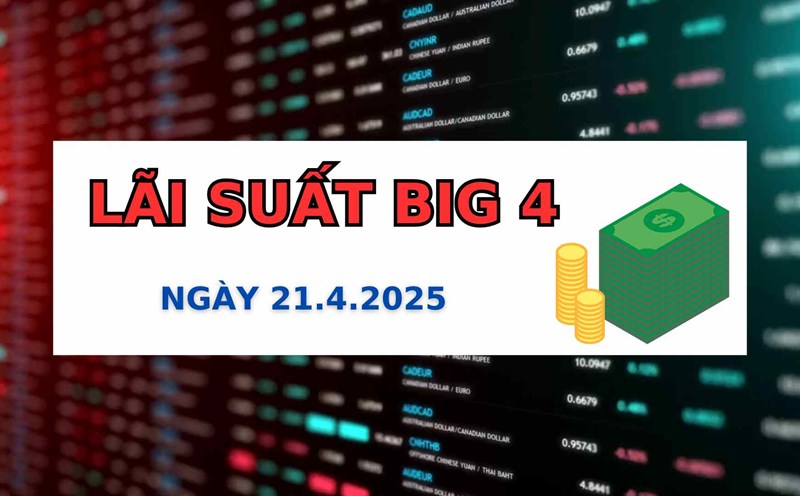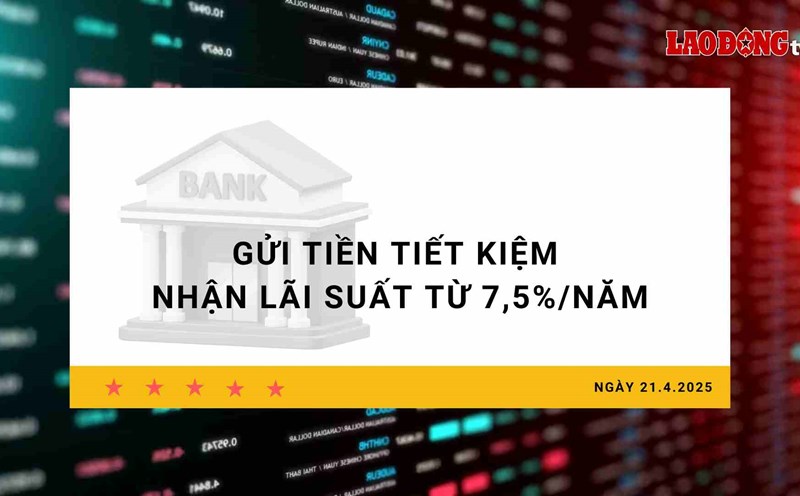Recently, commercial banks have continuously reduced deposit interest rates. Although the downward trend is still maintained, the adjustment rate has slowed down and interest rates are still anchored at a low level.
The mass interest rate cut took place right after the meeting between the State Bank and credit institutions at the end of March 2025, in which the regulatory agency continued to emphasize the orientation of reducing capital costs to support growth recovery.
Banks with reduced interest rates include: Vietnamese version, Hai Hai, Viet Nam Thuong Tin, Saigon Cong Thuong, Quoc te (VIB), Bao Viet, Kien Long, Bac A, Viet A, Thinhinh va Phat (PGbank), Import-Export (Eximbank), Loc Phat (LPBank), Nam A, Saigon Ha Noi (SHB), Quoc Dan (NCB), VCBNeo, BIDV, Techcombank, Vikki Digital Technology, Vietnam Modern (MBV), Phuong Dong (OCB), Cong Thuong (VietinBank), An Binh and Agriculture and Rural Development (Agribank)...
During the first quarter, popular short-term interest rates only fluctuated around 4.5-5.5%/year, creating favorable conditions to reduce capital costs for the economy.
Mr. Nguyen Quang Huy - CEO of the Faculty of Finance - Banking, Nguyen Trai University said: After a series of strong interest rate cuts, the interest rate level has now dropped to the lowest level in the past 15 years, with the common mobilization interest rate around 4.5%-5.5%, the average loan interest rate is about 8%-9%/year. However, there is not much room to continue to decrease sharply. Recent developments show that the banking system is gradually shifting to a period of stabilization and streamlining of interest rate policy, instead of continuing to loosen - drastically.
Until about a week ago, interest rates at some banks began to " streak" to increase again, focusing on short terms.
This development shows a slight reversal signal, reflecting competitive pressure that has returned in the context of credit demand showing signs of recovery.
The slight increase in interest rates at some banks is considered a technical adjustment, not a sign of a new increase cycle. "The competitive pressure to mobilize capital is increasing, especially in the small and medium-sized banking group. In addition, personal deposits tend to shift to investment channels with better yields such as gold, stocks, and real estate. Banks are also proactively restructuring capital sources, preparing for the credit peak season from the second quarter onwards, Mr. Huy analyzed.
From the perspective of macroeconomics, Mr. Huy emphasized: "In the context of the economic growth target in 2025, the government is still kept by the Government at a height of 8%, along with the 16% credit growth target set by the State Bank from the beginning of the year, it can be seen that the monetary policy orientation will still be in the direction of supporting growth, parallel with macroeconomic stability."
Forecasting the upcoming trend, Mr. Huy said: In the second quarter of 2025, deposit interest rates may increase slightly by 0.25-0.5 percentage points, mainly for terms under 6 months. In the second half of 2025, if inflation and exchange rates are well controlled, the interest rate level will remain at a reasonable low, increasing by a maximum of 0.5 percentage points".











